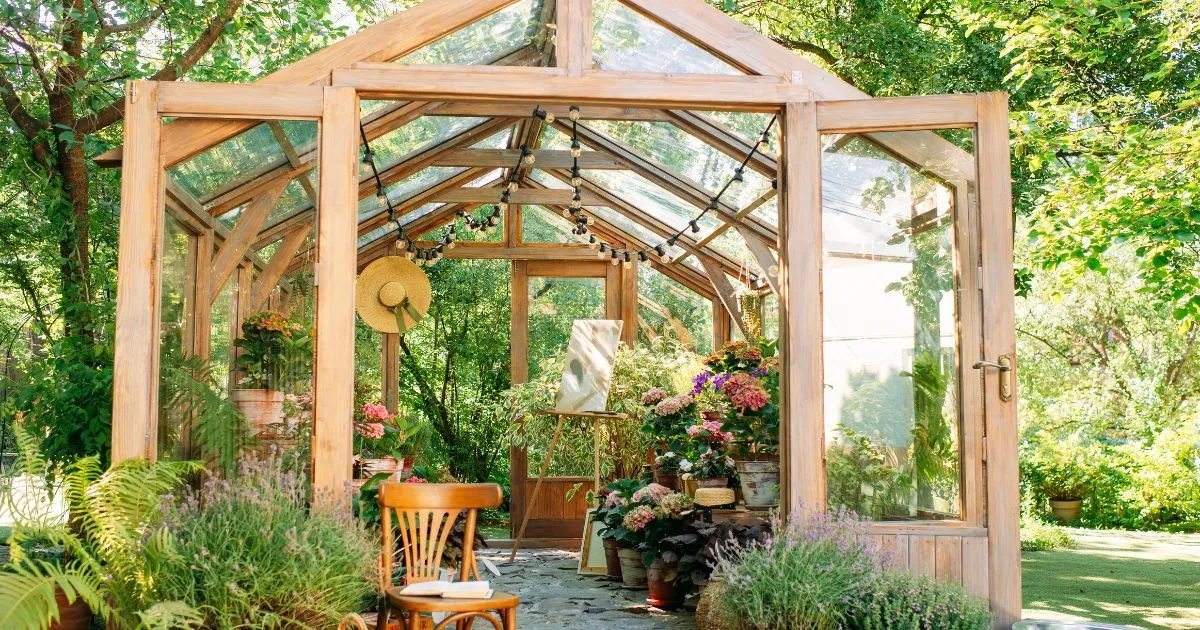Table of Contents
When it comes to constructing a shed, one of the most critical aspects is the roof framing. Shed roof framing is not just about providing shelter; it’s about ensuring durability, stability, and functionality. Whether you’re a DIY enthusiast or a professional builder, understanding the intricacies of shed roof framing is essential. This article will delve into the various aspects of shed roof framing, including its types, materials, construction techniques, and more. By the end of this guide, you’ll have a thorough understanding of how to design, build, and maintain a shed roof that stands the test of time.
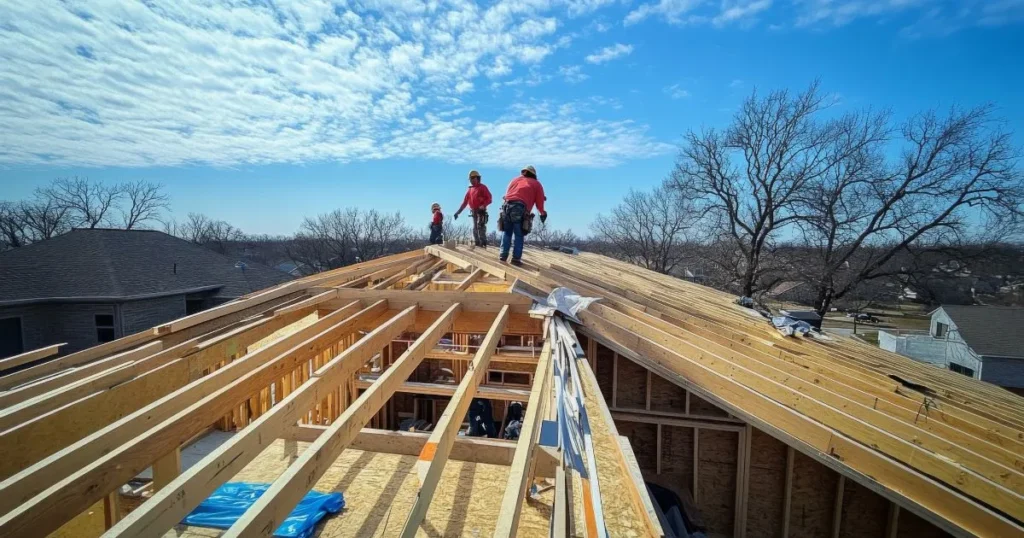
What is Shed Roof Framing?
Shed roof framing refers to the structural framework that supports the roof of a shed. Unlike more complex roof designs like gable or hip roofs, a shed roof is a single-sloping roof that is relatively simple to construct. However, simplicity doesn’t mean it’s any less important. Proper shed roof framing ensures that your shed can withstand various weather conditions, from heavy snow loads to strong winds.
Shed roofs are popular for their minimalist design and ease of construction. They are commonly used for garden sheds, storage units, and even modern architectural designs. The key to a successful shed roof lies in its framing, which provides the necessary support and stability for the entire structure.
Types of Shed Roof Framing
There are several types of shed roof framing, each with its own set of advantages and disadvantages. The type you choose will depend on your specific needs, the size of your shed, and your budget. Below are the most common types of shed roof framing:
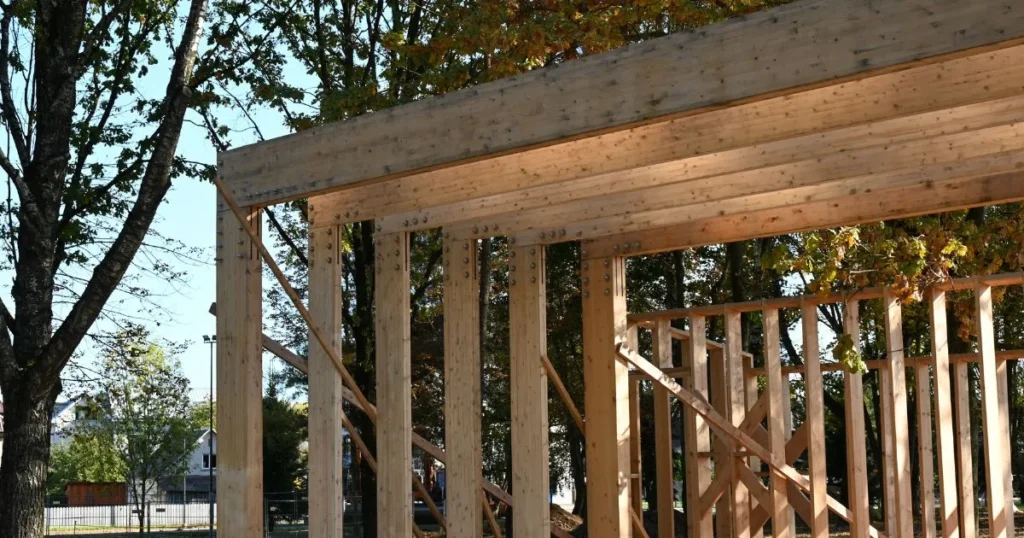
1. Lean-To Shed Roof Framing
The lean-to shed roof is the simplest and most cost-effective design. It consists of a single sloping plane that leans against an existing structure or is supported by taller walls on one side. This type of framing is ideal for small sheds or those attached to another building, such as a house or garage.
Advantages:
- Easy to construct.
- Requires fewer materials.
- Ideal for small spaces.
Disadvantages:
- Limited headroom on the lower side.
- Not suitable for larger sheds.
2. Gable Shed Roof Framin
A gable roof features two sloping sides that meet at a ridge, forming a triangular shape at each end. This design is more complex than a lean-to roof but offers more space and better ventilation.
Advantages:
- Provides more interior space.
- Excellent for ventilation.
- Aesthetically pleasing.
Disadvantages:
- More challenging to construct.
- Requires additional materials.
3. Hip Shed Roof Framing
A hip roof has slopes on all four sides, which meet at the top to form a ridge. This design is more stable and durable, making it suitable for areas with high winds or heavy snowfall.
Advantages:
- Highly durable and stable.
- Excellent for harsh weather conditions.
- Aesthetically versatile.
Disadvantages:
- More complex to build.
4. Mansard Shed Roof Framin
The mansard roof is a unique design that features two slopes on each side, with the lower slope being steeper than the upper one. This design offers more living space and is often used for sheds that double as workshops or studios.
Advantages:
- Provides additional living or storage space.
- Aesthetically unique.
Disadvantages:
- Complex construction.
- Higher cost due to additional materials.
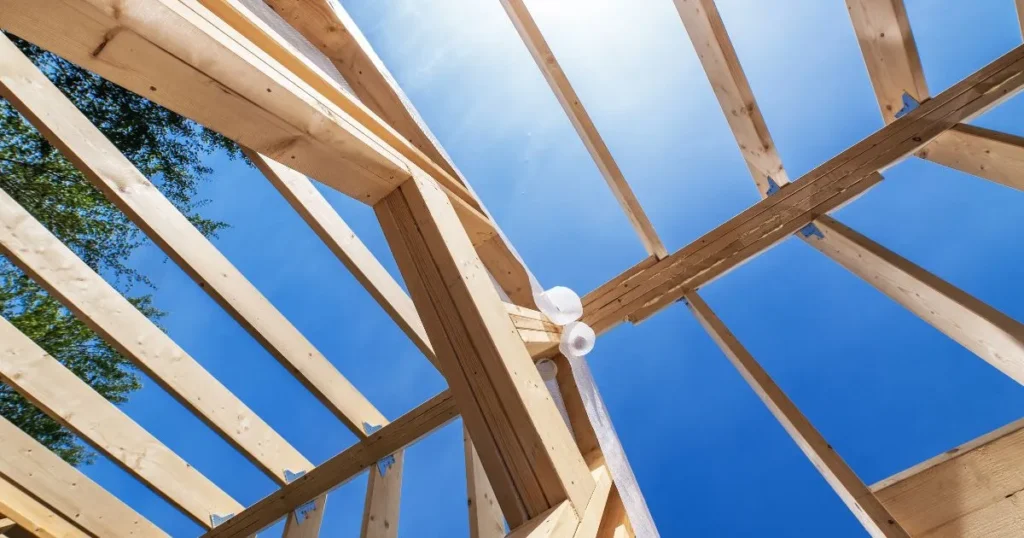
Materials Used in Shed Roof Framing
The materials you choose for your shed roof framing will significantly impact its durability, performance, and overall cost. Below are the most common materials used in shed roof framing:
1. Wood
Wood is the most traditional and widely used material for shed roof framing. It’s easy to work with, readily available, and relatively inexpensive. However, wood requires regular maintenance to prevent rot, insect damage, and warping.
Pros:
- Affordable.
- Easy to cut and shape.
- Widely available.
Cons:
- Requires regular maintenance.
- Susceptible to rot and pests.
2. Stee
Steel is a strong and durable material that is ideal for areas with harsh weather conditions. It’s resistant to rot, pests, and fire, making it a long-lasting option. However, steel is more expensive and challenging to work with than wood.
Pros:
- Highly durable.
- Low maintenance.
- Resistant to pests and fire.
Cons:
- More expensive.
- Heavier and harder to cut.
3. Aluminum
Aluminum is a lightweight and corrosion-resistant material that is ideal for low-maintenance shed roofs. It’s easy to work with and doesn’t require painting or sealing. However, aluminum is not as strong as steel and may dent easily.
Pros:
- Lightweight.
- Corrosion-resistant.
- Low maintenance.
Cons:
- Less durable than steel.
- Can dent easily.
4. Composite Material
Composite materials, such as engineered wood or plastic-wood blends, offer the best of both worlds. They are durable, low-maintenance, and resistant to rot and pests. However, they can be more expensive than traditional wood.
Pros:
- Durable and long-lasting.
- Low maintenance.
- Resistant to rot and pests.
Cons:
- Higher cost.
- Limited availability.
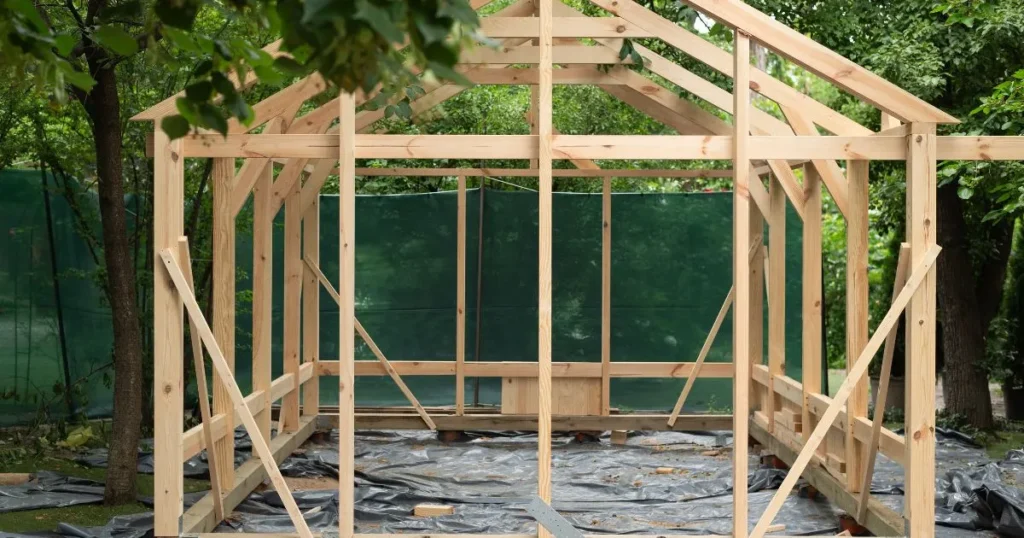
Construction Techniques for Shed Roof Framing
Proper construction techniques are crucial for ensuring the stability and longevity of your shed roof. Below is a step-by-step guide to building a shed roof frame:
1. Planning and Design
Before you start building, it’s essential to have a detailed plan. This includes determining the slope of the roof, the type of framing, and the materials you’ll use. Use a shed roof framing calculator to determine the correct measurements for rafters, joists, and other components.
2. Framing the Wall
The walls of the shed need to be framed first, as they will support the roof. Ensure that the walls are level and square. Use pressure-treated lumber for the bottom plates to prevent moisture damage.
3. Installing the Rafters
Rafters are the inclined beams that support the roof. They need to be cut to the correct length and angle and then securely attached to the walls. Use a rafter square to ensure accurate cuts.
4. Adding Sheathing
Once the rafters are in place, sheathing is added to provide a base for the roofing material. This can be plywood or oriented strand board (OSB). Ensure that the sheathing is securely fastened to the rafters.
5. Installing the Roofing Material
Finally, the roofing material is installed. This can be shingles, metal panels, or any other material suitable for your climate and aesthetic preferences. Follow the manufacturer’s instructions for proper installation.
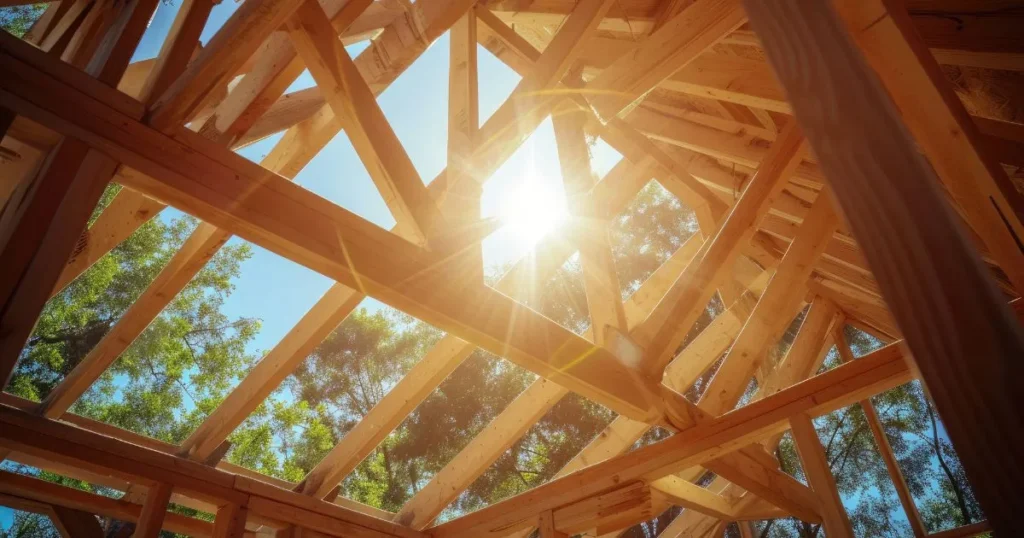
Common Mistakes in Shed Roof Framing
Even with the best planning, mistakes can happen. Here are some common pitfalls to avoid:
1. Incorrect Slope
The slope of the roof is crucial for proper drainage. If the slope is too shallow, water can pool and cause leaks. Ensure that the slope meets the requirements for your roofing material.
2. Improper Spacing of Rafters
Rafters need to be spaced correctly to support the weight of the roof. Incorrect spacing can lead to sagging or even collapse. Follow local building codes for proper rafter spacing.
3. Using Subpar Materials
Cutting corners on materials can lead to a roof that doesn’t last. Always use high-quality materials that are suitable for your climate.
4. Neglecting Ventilation
Proper ventilation is essential to prevent moisture buildup, which can lead to mold and rot. Install vents or ridge vents to ensure adequate airflow.
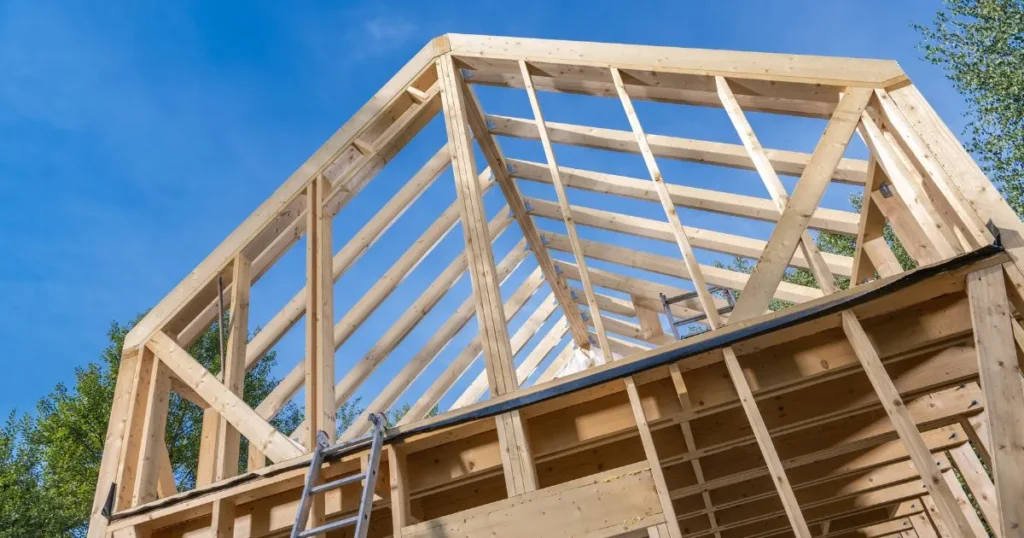
Maintenance Tips for Shed Roof Framing
To ensure your shed roof remains in good condition, regular maintenance is essential. Here are some tips:
1. Inspect Regularly
Check for any signs of damage, such as cracks, rot, or insect infestation. Address any issues promptly to prevent further damage.
2. Clean the Gutters
Ensure that the gutters are clear of debris to allow proper drainage.
3. Repair Leaks Immediately
If you notice any leaks, repair them as soon as possible to prevent water damage.
4. Reapply Protective Coatings
If your roof is made of wood, reapply protective coatings as needed to prevent rot and insect damage.
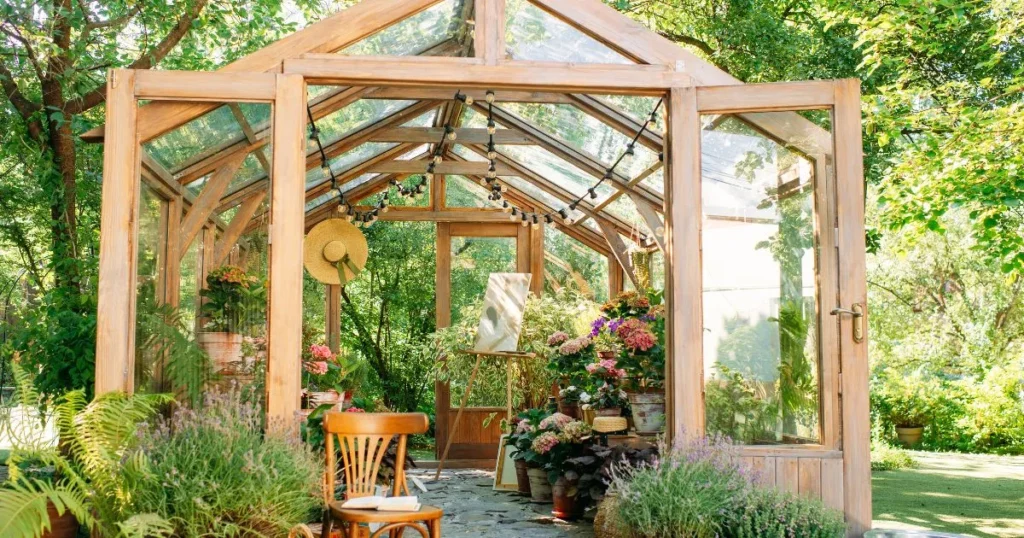
Conclusion
Shed roof framing is a critical aspect of shed construction that requires careful planning and execution. By understanding the different types of framing, materials, and construction techniques, you can ensure that your shed roof is durable, stable, and functional. Regular maintenance will further extend the life of your shed roof, providing you with a reliable shelter for years to come.
FAQ
What is the simplest type of shed roof framing?
The simplest type of shed roof framing is the lean-to design, which involves a single sloping roof.
What materials are best for shed roof framing?
Wood is the most traditional and easiest to work with, but steel and aluminum offer greater durability and low maintenance.
How do I determine the slope of my shed roof?
The slope of your shed roof depends on your climate and the roofing material you plan to use. A steeper slope is better for areas with heavy snow or rain.
Can I build a shed roof myself?
Yes, with the right tools and knowledge, you can build a shed roof yourself. However, it’s essential to follow proper construction techniques and safety guidelines.
How often should I inspect my shed roof?
It’s a good idea to inspect your shed roof at least twice a year, preferably in the spring and fall, to check for any signs of damage or wear.
What are the common mistakes in shed roof framing?
Common mistakes include incorrect slope, improper spacing of rafters, using subpar materials, and neglecting ventilation.
How can I extend the life of my shed roof?
Regular maintenance, including inspections, cleaning gutters, repairing leaks, and reapplying protective coatings, can significantly extend the life of your shed roof.
By following these guidelines and tips, you can ensure that your shed roof framing is both functional and durable, providing you with a reliable shelter for years to come.

